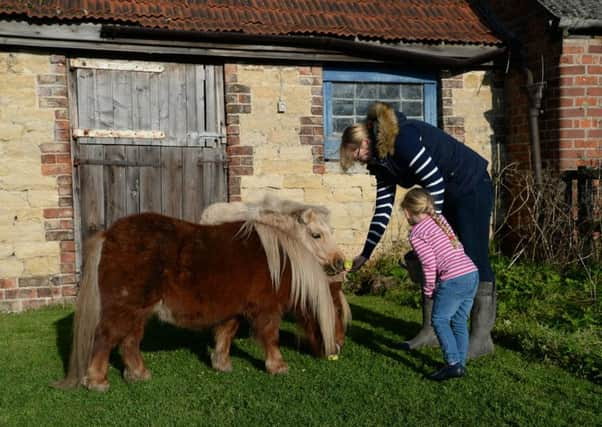Shetlands obsession that runs in the blood at foot of the Howardian Hills


Mark and Alison McCandless moved to Green Tree Farm in Harton, a quiet spot that gives an impression of being a North York Moors hamlet without the hills, from Bramham, West Yorkshire in 2009 following Mark’s appointment at Ryedale School in Nawton where he has since become headteacher.
Before the move to North Yorkshire, Mark taught PE at Allerton High School in Leeds and was a tennis coach at the David Lloyd Centre in Meanwood, while Alison worked in orthopaedics for Leeds Teaching Hospitals.
Advertisement
Hide AdAdvertisement
Hide Ad“We came to Harton so that it was closer to my work and still commuting distance for Alison’s,” says Mark who was born in the one part of the Republic of Ireland that is more northern than Northern Ireland, on the Inishowen peninsula near the village of Culdaff that has one of the County Donegal’s most popular beaches.
“I’d wanted land as well as a nice house when we moved as I enjoy livestock. Both sets of grandparents were farmers and my uncle still farms. My dad runs a successful business but we always kept poultry and goats, so it was a natural thing to want to keep something eventually.
“We’d been looking at properties with up to 15 acres but ended up buying this lovely house without any land, so I started renting next door’s paddock because I wanted to start off with poultry by keeping some chickens.”
The Shetland connection began with a visit back home to Donegal. Alison says: “I was working over New Year so Mark went back to Ireland. He was only there three hours and had agreed to buy and bring back a pony. I go with him to Ireland every time now.
Advertisement
Hide AdAdvertisement
Hide Ad“We needed something to keep the grass down,” says Mark. “And my uncle breeds Shetland ponies. Everything just grew from there. Before that time we had just a dozen rare breed chickens producing eggs for us. We now rent, including summer grazing, around 26 acres with Alison and our two young daughters Niamh (four) and Éile (two) taking on the lion’s share of the work during the week. We also have a breeding herd of six cows and a bull called Bruce, plus a young dun coloured bull I’m bringing on. Since we’re taking stock through to 30-36 months that means we can have anything up to 20-24 head of cattle around.
“We only breed pure Shetland cattle and there are several colourings. My own feeling is that if you’re going to keep something you might as well keep what you like the look of, as much as it also being an easy breed to keep and with a value.
“We’ve recently acquired Shetland dun coloured cattle that are very rare, but we also have the red and whites that are not quite so rare and black and whites that are the more common variety.
“We’ve been buying-in cattle for the herd until this summer but I’m now happy that it’s where we want to be in order that we can manage the herd and have enough for either selling as meat, providing replacements, increasing the herd or selling on to other breeders.’
Advertisement
Hide AdAdvertisement
Hide Ad“I don’t run my heifers with the bull until they are two-years-old as I find this helps with the size of progeny they produce. They are a great milky breed and easy calvers that give a good return for low input. We feed them with just grass and hay and the only reason I bring them in at all is down to protecting the grassland for summer.
“We first started selling Shetland beef three years ago and sell it as boxed mixed joint packages. We get 14 boxes from each animal and so far our friends and family have cleared us out each time.”
It was the sheep that followed Jack the Shetland pony’s arrival and having started with just two Mark and Alison now have a small pedigree flock of 14 breeding ewes.
“We lamb in early April, hopefully during the Easter school break, and this year we had 26 lambs. The ewe lambs are registered and sold for breeding.
Advertisement
Hide AdAdvertisement
Hide Ad“The male wethers are castrated and some are sold while others are brought on and killed out as hoggets at about 18 months. The beauty of keeping both Shetland cattle and sheep is that we’ve never had to help with the birth of any calf or lamb.”
Alison’s rationale for their head-long ride into everything Shetland, including geese, ducks and chickens she puts down to that of Mark’s collector habits.
“It’s like Top Trumps here. We’ve had to collect the whole set.”
“All I’m missing now is a Sheltie dog,” says Mark.
I can’t tell you Alison’s expression at this comment.